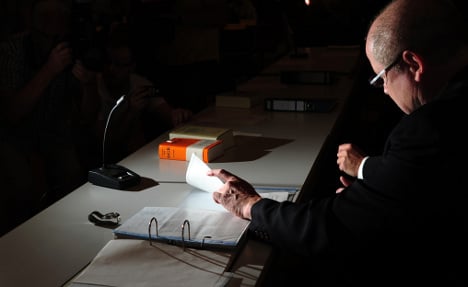“I am ashamed,” the 58-year-old doctor told the court in Frankenthal near Mannheim in Rhineland-Palatinate on Thursday. He spoke of a dark side to him, being unable to explain his actions over three years in any other way.
The extraordinary case – the first of such a kind in Germany – came to light only in 2011 after the doctor’s medical assistants became suspicious, noticing that he always opened and closed a drawer before a patient came into his examination room.
The drawer was not normally used for anything – and was usually empty when the assistants looked inside – until one day one of them found a digital camera inside.
“That really shocked us,” one of the assistants told the court. She found a photo on the camera of a patient in examination position on the gynaecological chair. This prompted her to go to the police.
Officers found 36,146 such photos, as well as 62 videos, the Welt newspaper reported. He is being charged with more than 1,400 counts of gross invasion of privacy and ten of sexual abuse – accused of conducting vaginal examinations for his own sexual arousal rather than for medical reasons.
He told the court that he had not intended to offend, injure or damage anyone. The case continues.
DPA/The Local/hc




 Please whitelist us to continue reading.
Please whitelist us to continue reading.
Member comments